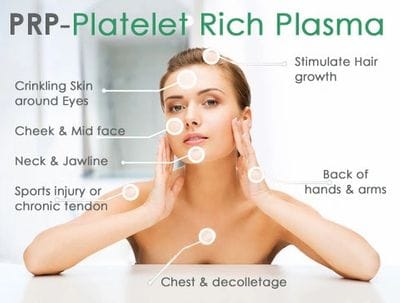
Platelet-Rich Plasma (PRP) is a regenerative treatment that involves drawing a small amount of a person's blood, spinning it in a centrifuge to separate platelets, and then applying the concentrated plasma to the skin. Rich in growth factors, PRP stimulates collagen production, promotes healing, and rejuvenates the skin.
Platelet-Rich Fibrin (PRF) is an advanced version of PRP. It involves a similar process of drawing blood and spinning it, but retains a higher concentration of platelets, fibrin, white blood cells, and stem cells. This gel-like substance, when applied, offers enhanced healing properties and regenerative effects, making it a popular choice for various treatments.
PRF treatment stimulates the production of collagen in the scalp, which helps improve the thickness and volume of the hair strands. By enhancing collagen synthesis, PRF contributes to the overall density and fullness of the hair, making it appear thicker and healthier.
|
Parameters |
Platelet-Rich Plasma (PRP) |
Platelet-Rich Fibrin (PRF) |
|
Process |
Blood is spun to separate platelets for topical use |
Blood is spun to create a gel-like substance with higher concentrations of platelets, fibrin, and growth factors |
|
Advantages |
Regenerative, promotes collagen, reduces inflammation |
Enhanced healing properties, higher concentration of growth factors |
|
Usage |
Skin rejuvenation, joint therapies |
Similar applications with a focus on advanced regenerative effects |
|
Consistency |
Liquid |
Gel-like substance |
|
Effectiveness |
Noticeable results with multiple sessions |
Potentially faster and more noticeable results |
|
Duration of Treatment |
Varies, multiple sessions might be needed |
Potentially fewer sessions due to higher concentrations |
|
Disadvantages |
Requires more sessions for optimal results |
May be costlier due to advanced processing |
|
Preparation |
Platelets are separated and used topically |
Gel is prepared from blood components for application |
|
Healing Properties |
Regenerative and collagen-promoting |
Enhanced regenerative and healing properties |
|
Application |
Often used for injections or topical application |
Suitable for various applications including gel fillers |
|
Fibrin Content |
Lower fibrin content |
Higher fibrin content for enhanced healing |
|
Stem Cells |
Fewer stem cells |
Higher concentration of white blood cells and stem cells |
|
Post-Treatment Care |
Usual care after injections or topical application |
Similar post-treatment care as PRP |
Skin boosters sometimes referred to as 'injections for skin quality,' are specially-made treatments specifically designed to administer skin rejuvenating substances like Hyaluronic Acid (HA), which restores the moisture in the skin, and improves skin elasticity, firmness and radiance.
CopyRight© 2023 All Rights Reserved.